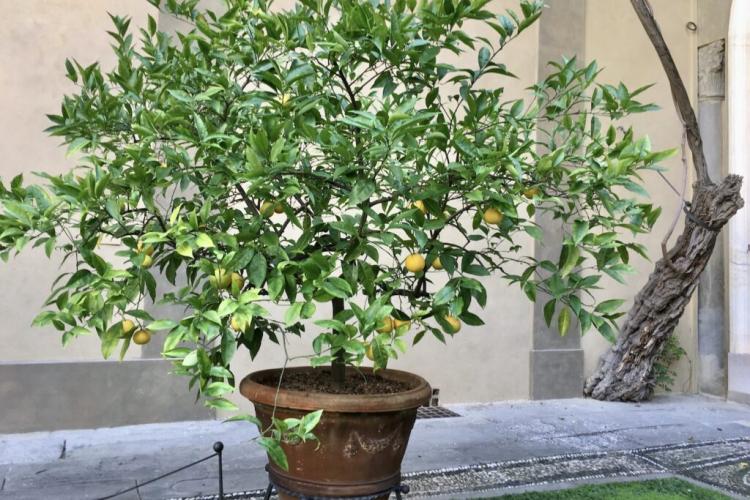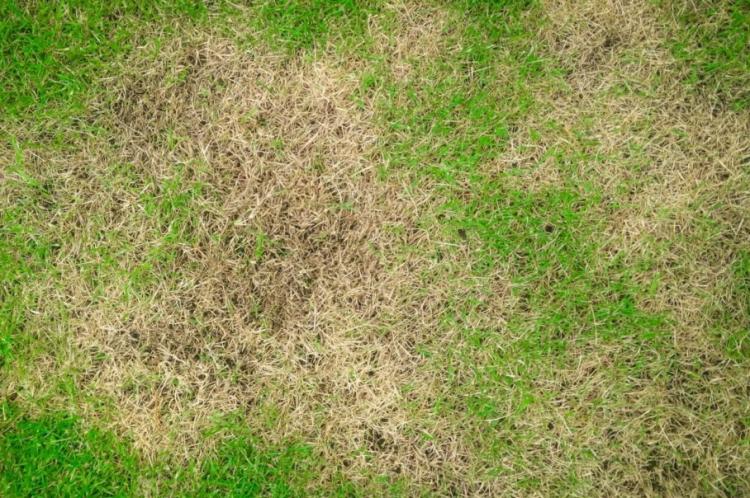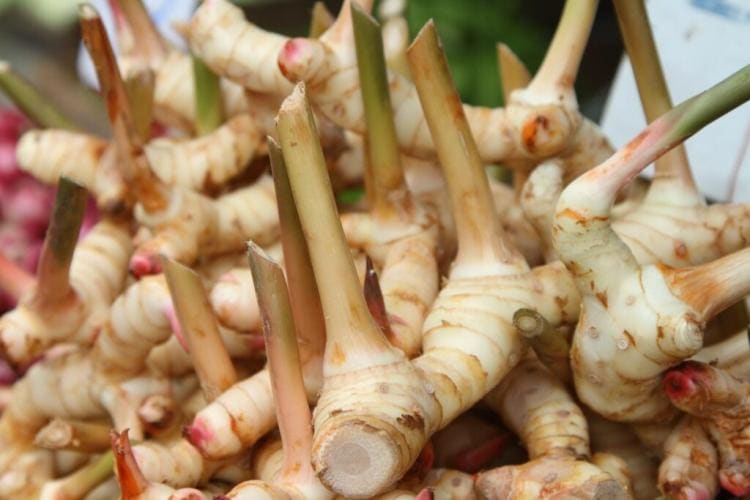Bark mulch against weeds: benefits & tips on how to proceed
Bark mulch is extremely useful in the garden and also in the flower pot, as it protects the earth from drying out and frost. But does bark mulch also help against weeds?
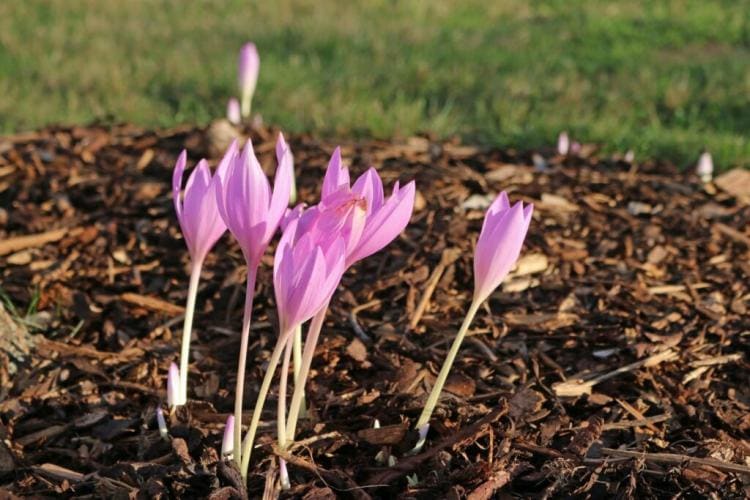
Bark mulch helps against weeds and thus supports your garden plants [Photo: JohnatAPW / Shutterstock.com]
In fact, bark mulch can be used effectively against weeds. Here you can find out exactly how this works and what you should pay attention to when spreading the mulch material.
Which bark mulch helps against weeds?
Table of Contents
Bark mulch is the finely chopped bark of trees, which is obtained, for example, after felling work in the forest. Accordingly, there are different types of bark mulch that come from different tree species. Bark mulch acts as a weed inhibitor mainly due to its structure. Hardly any light penetrates the soil through the mulch layer and the weeds cannot find a hold in the loose material. However, it should be noted that the decomposition process of the bark fixes nitrogen in the soil. At the beginning there may therefore be a lower supply of nitrogen for the plants. This is due to the tannins contained in the bark and the high carbon content, which exceeds the nitrogen content many times over.
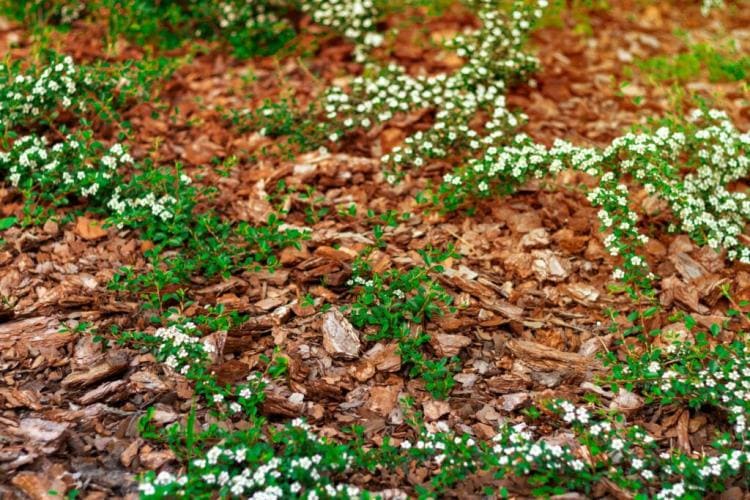
Pine bark naturally has a beautiful, red-brown hue [Photo: Andrii Chagovets / Shutterstock.com]
Bark from certain tree species, such as pine bark, fixes less nitrogen in the soil than other types of bark and is just as effective against weeds. Pine bark also decomposes more slowly than the bark material of other tree species and can thus offer protection against weeds and dehydration for longer. Our Plantura organic pine bark, for example, is an ideal biological mulch material, which offers the plants long-lasting protection with its coarse structure. Due to the natural look, the natural bark integrates perfectly into the garden. Although pine trees ( Pinus pinea ) are not native to us and have to be imported from Mediterranean countries, their bark is still convincing due to its higher longevity, lower heavy metal pollution and low acid content compared to domestic bark mulch. For the sake of the environment, our organic pine bark is sustainably produced in the EU.
Tip : If weeds penetrate the surface despite bark mulch, they can be removed easily thanks to the loose structure.
Bark mulch against weeds: Here's how
Most plants and beds thank the use of bark mulch, as it has many advantages and improves the growing conditions. In vegetable patches, however, bark mulch should be avoided. It is better to use straw or comparable mulch material here, as unfortunately snails also feel comfortable in bark mulch. Warmth and drought-loving plant species as well as Mediterranean herbs should also not be mulched. In the following instructions you will learn how to mulch properly and how to take action against weeds.
Mulching against weeds at a glance:
- First of all, the soil should be loosened with a hoe.
- Then completely remove the existing weeds, including the roots.
- It is best to apply a suitable slow-release fertilizer at this point to compensate for the initial nitrogen removal by the bark mulch.
- Now smooth the surface of the earth with a rake.
- Now the bark mulch is spread; the layer should be about 5 – 7 cm high so that it can effectively suppress weed growth; if the layer is too thin, weeds can still find their way up; do not apply the bark mulch directly to the plants, but leave a few centimeters between the stem and the mulch.
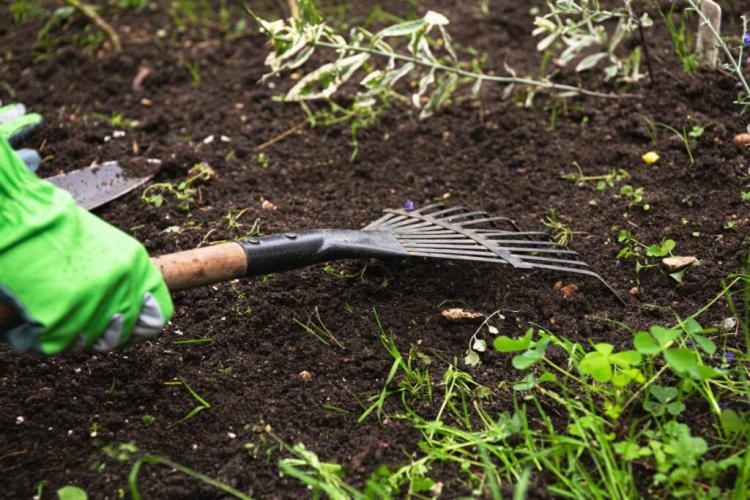
Before mulching, the soil should be loosened and any weeds removed [Photo: Jannissimo / Shutterstock.com]
Tip : Bark mulch can also be used against weeds in flower pots. Finer grain sizes are best here, as the mulch layer is only spread over a smaller area.
When should you mulch against weeds?
Since bark mulch offers protection from the weather in both winter and summer, it can be applied all year round. However, beds with seeds or young plants should only be mulched when the seedlings are large enough. As soon as some leaves have formed, a layer of mulch can be applied to the base of the leaves.
Spring and autumn are particularly suitable for mulching because then there is still little vegetation covering the ground. Since a layer of mulch can contribute to the successful wintering of perennials, woody plants and the like, it is also worth spreading bark mulch before winter.

A little space should be left between the bark mulch and the plant [Photo: Jon Rehg / Shutterstock.com]
How much bark mulch do you need against weeds?
In order to counteract the growth of weeds, a fairly high layer of mulch is necessary. At least 5 – 7 cm, better 7 – 10 cm should be spread so that weeds can no longer penetrate the surface.
In addition to weed inhibition, there are many other functions and benefits of mulching. We show how the mulch layer works and how best to proceed with the application.

